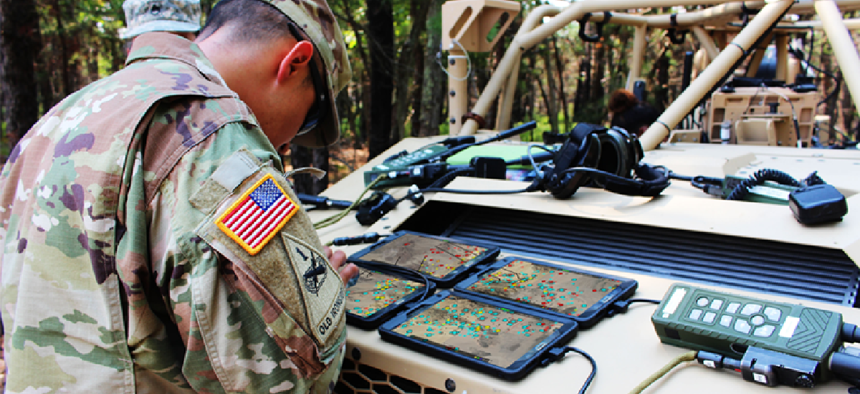Army plans to embed coders with troops


Connecting state and local government leaders
To address operational bottlenecks, the Army is looking at putting tech-savvy soldiers on the battlefield and using machine learning to speed risk analysis of budget decisions.
To address operational bottlenecks, the Army is looking to put tech-savvy soldiers on the battlefield and use machine learning to speed risk analysis of budget decisions.
Army Futures Commander Gen. John Murray said the service's newly launched Army Applications Laboratory is working to expand ability for soldiers to code in the field to repair communications systems.
"We actually forward-deployed some coders to work with units on problems as they were discovering [them], the ability to recode mission command software to account for some things that weren't readily apparent to the operational force," Murray told reporters following a House Armed Services Subcommittee hearing on Army modernization.
Having soldiers who can code on the fly is an important skill the Army needs for the future of warfare, he said.
"I do think that's a skill set that the Army is going to have to adopt," he said. "So a commander can find out a problem -- C2, command and control systems aren't working right -- go get his four hours of sleep … come back, and in the meantime, we've re-coded the system to account for the problems that we're having."
The Army Applications Lab is also working on a solution that would use machine learning to automate budget decisions. The Army completed a nearly year-long evaluation of its programs through a zero-based approach, justifying every dollar spent. Murray said the lab is looking at algorithmic solutions that would cut man-hours needed and evaluate risk to the operational force and industrial base when procurement levels are reduced.
"It's not necessarily the decision-making, but how that is presented in a more automated way. Right now, that process was a stack of PowerPoint slides about this high," Murray said gesturing his hands a few feet apart.
Using machine learning would allow Army leaders to "see the impacts of the decisions in real time as opposed to somebody going back and working on it for six or seven hours and say this is the impact of the [budgeting] decisions made," he explained.
This article was first posted to FCW, a sibling site to GCN.
NEXT STORY: Innovation: More than following the data





